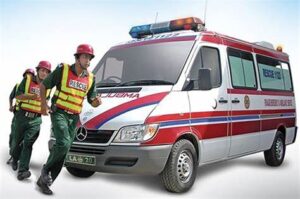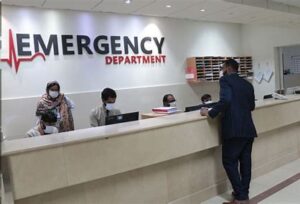 Trauma related death is among the top reasons of mortality in younger population. A lot of emphasis has been placed on saving these lives including better pre-hospital care, golden hour pathway of care and early definitive care in hospitals through better surgical input and improved critical care.
Trauma related death is among the top reasons of mortality in younger population. A lot of emphasis has been placed on saving these lives including better pre-hospital care, golden hour pathway of care and early definitive care in hospitals through better surgical input and improved critical care.
The trauma care has come a long way in the world yet in Pakistan, we are lagging behind. Although people have identified the problem, the solution is not in sight yet. The people who sustain the injury are at the mercy of a broken system and only luck is the deciding factor between life and death or disability.
Trauma care is not seen as collaborative effort in Pakistan. The care seems to be dealt from a surgical point of view and whenever we talk of trauma, the discussion is dominated by our surgical colleague with only definitive care as option is usually discussed. The other aspects and spectrum of trauma care also require our input and consideration.
The development of two phenomena in Pakistan are slowly changing the canvas of trauma care. The first is improving pre-hospital care and the other is spread of Emergency Medicine across Pakistan.


It is prudent to elaborate the components of trauma care. The care of trauma patients should start at the scene of accident or trauma but is far away from being a reality in Pakistan. When the healthcare personnel reach the scene, which is not always a trusted phenomenon, they are mostly not capable of dealing with trauma in the better fashion.
Once the patient has reached the emergency then proper trauma care starts. The components of that care are:
- Primary Survey
- Resuscitation
- Diagnostic evaluation
- Definitive treatment
- Rehabilitation
The primary survey and resuscitation should start from the scene of accident to give patient best chance of survival. And when patient reach to the emergency department then the primary survey should be done again so nothing is missed. Usually, the resuscitation can be considered true life saver as any unstable patient cannot go through definitive care until stabilized. Similarly, no resuscitation is considered success unless definitive care is timely provided.
The concept of trauma team was initiated to gather most relevant people in the Emergency Department in cases of trauma. There are indications for trauma calls, and it includes:
- Abnormal vital signs:
Respiratory rate = <10 or >29
Symbolic B.P = < 90mmHg
Heart rate = >120bpm
GCS = < 13
- Injury Pattern.
- Penetrating injury to the head, neck, or torso.
- Flail chest
- Airway obstruction
- Suspected complex pelvic injury.
- Two or more long bone fractures.
- Traumatic amputation proximal to knee or elbow.
- Major crash injury
- Penetrating trauma to a limb with arterial injury
- Crushed, mangled, amputated or pulseless limb.
- Paraplegia or quadriplegia
- Major burns > 20% in adult (>10% in PEADS) or airway burn.
- Discretionary trauma calls
A call made by a senior based on mechanism of injury.
-
-
-
- Fall more than 3 meters.
- Entrapment for more than 30 minutes
- Cyclist or motorcyclist VS car
- Pedestrian VS car or train
- Relative hypotension
- Ejection from a vehicle
- Fatality in a vehicle
- Patient anticoagulated or on a beta blocker
- Elderly patient with moderate trauma
- Pregnant patient with moderate trauma.
-
-
3. Transfers:
Major trauma patients from another hospital should be received by trauma team.
- Multiple Causalities:
If ED is intimated regarding more than 4 patients regardless of severity of injury.
To provide care, collaborative efforts are extremely important. The time is always ticking against the patient, and it becomes critical to have input from important specialties as soon as possible. The trauma team comprises of
- Anesthetists Resident
- General Surgical Resident
- Orthopedic Resident
- Neurosurgical Resident
- Emergency Medicine Resident
- Two nurses from ED
- Radiographer
- Scribe
Due to early input from all the quality of care gets positively affected and survival improves.
Our hospitals need to make sure they collaborate with all the stakeholders, including, pre-hospital care providers and the surgical colleagues to come together and help the patient get the appropriate care. They also need to make sure the properly trained Emergency doctors and nurses are available to provide the coverage to the trauma victims along with other colleagues. We as a nation need to work on the effort and collaboration to better treat trauma and improve overall emergency care.